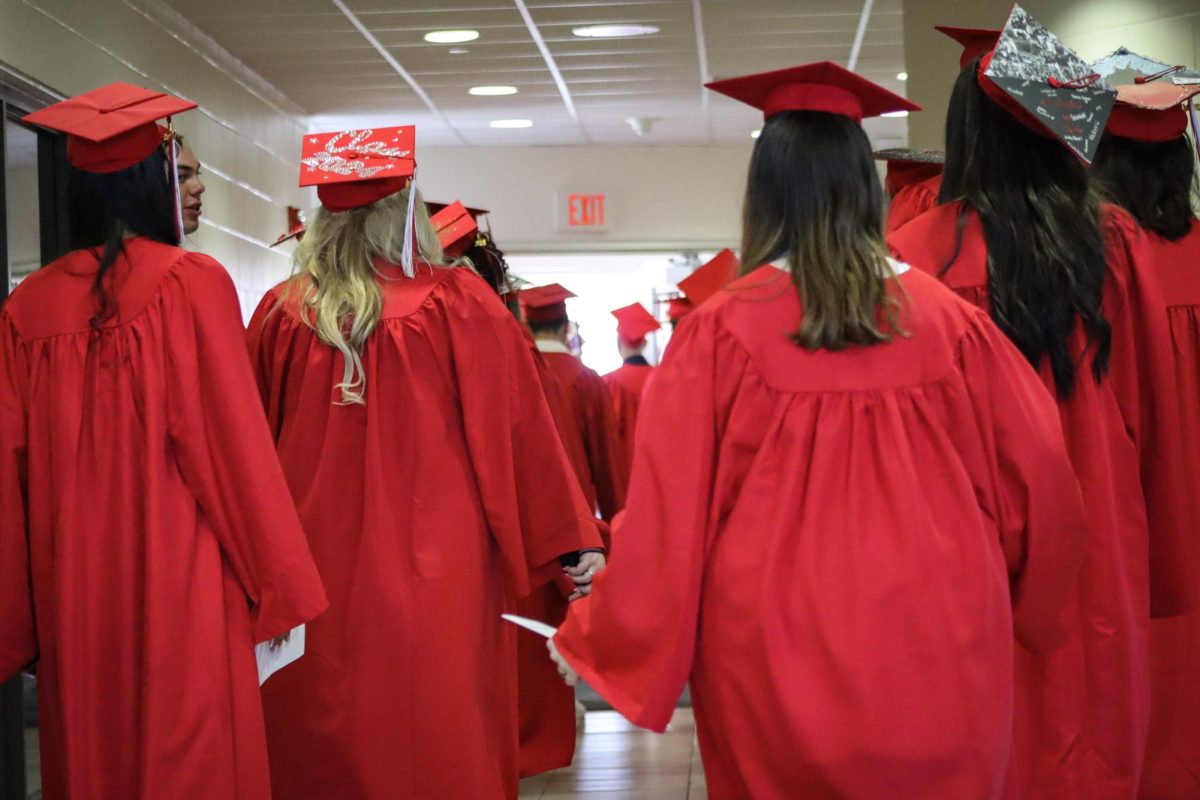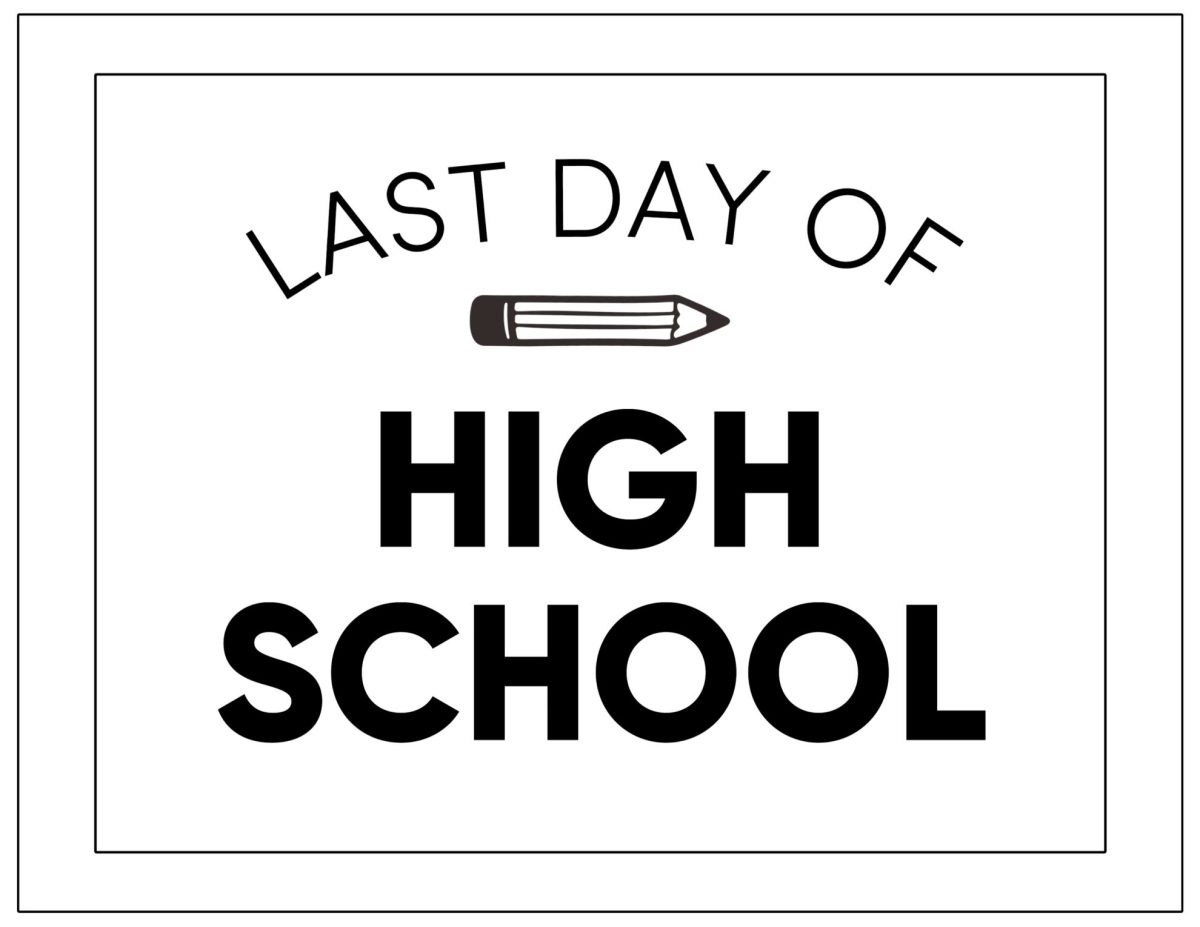
by Alex Schley
All Hudson High School teachers I spoke with agreed “self reflection has to be part of the curriculum;” however, almost all also agreed the current system of portfolios is not effective.
Portfolios are a system of reflective practice in both the history and English departments. At the start of eighth grade, students are given a Google Site, which has a template formatted for their reflections through senior year. Under each course template there are five core “categories”: collaboration, communication, creativity, critical thinking, and independence. Within each category students are given “guiding questions to consider when reflecting on [their] learning.”
The purpose of portfolios, according to Curriculum Coordinator Todd Wallingford, is to make teachers and students “really be mindful of why we do what we do. Teachers themselves can get caught up in the minutia of The Great Gatsby[for example], when really our end game isn’t knowing the ins and outs of The Great Gatsby. Our endgame should be to get kids to be better communicators, collaborators, independent learners. So I want teachers, and therefore kids, to be mindful that everything they do is in the service of our learning goals(categories)… If teachers are really aligning their teaching to the learning expectations, then the theory is that it will make learning more meaningful for kids.”
Wallingford’s goal is where the system falls apart. Most teachers are not really aligning their teaching to the learning expectations because to do so, they need also to achieve the goal of having “everything they do be in the service of our learning goals,” which is impossible in most classrooms. In order for students to effectively be able to reflect on their growth throughout the year, teachers need to create activities which consistently fit these categories.
The current system of portfolios has gained a stigma among students. These are the most common student comments on a survey I conducted of a random sample of just under fifty students.
“They are useless, and I could be spending my time benefitting from other academic opportunities.”
“I feel that portfolios are a waste of time because students are only writing what they know their teachers want to hear.”
“ I feel they are awful for people without computers, and it should stop.”
While many of the students’ reasoning varied, one theme was constant; the goal of portfolios is not being achieved or understood. In theory, portfolios should be an effective learning tool; however, their breakdown is in the implementation.
Some teachers put a strong emphasis on the learning categories in their classroom, while others talk about or work with them very little. Although teachers have been instructed to spread portfolios out over the course of the year, many teachers admit they have failed to do so. Teacher A said, “I rarely give students time in class to work on portfolios, partly because the technology takes so much time to get set up in class, but also because I’m already struggling with being able to teach all the content that is expected.”
Teacher B has a similar struggle in their class. “ I’d say I try to work in some time each quarter, but I don’t even think I’m doing a good job with that this year.”
Because students are not assigned time to work on portfolios, it is often put off till the end of the year.Therefore, students’ responses often do not reach the deep reflection Wallingford intended. Teacher A reported, “Their thoughts are often surface level or they are simply feeding the teacher what they think they’ll want to hear. Really good reflections require a lot of thought about themselves…and this can’t be done at the last minute.”
Teacher C, who helped develop the system of portfolios, explained, “If the teacher’s curriculum doesn’t allow them(students) opportunities to demonstrate their proficiency over time, then the whole thing’s going to fall apart. And I think that that is what people are struggling with, as educators, is do I want to create my class around these things, or are they just being added on at the end and not really integrated well.”
When implemented properly, portfolios make it difficult for teachers to reach their main objective of teaching the curriculum. As teacher C explained, “A lot of teachers have said that layering on initiative after initiative is stupid, and overwhelming teachers, and undermining what they are trying to do in their room.”
Each year the English and history teachers are challenged with the task of preparing a group of students for the next grade-level course, MCAS, SAT, ACT, AP Tests, SAT IIs, college essays, and now portfolios. With so many expectations in place teachers are “having a hard time just fitting in basic grammar rules,vocabulary, reading time, public speaking work, etc.” Teachers have already built their curriculum around the literacy goals of the district. Therefore, having teachers rework the already effective system is unreasonable.
In addition, touching upon all five areas of learning is not always possible, especially in an upper level course. When pressed against the clock to prepare students for Advanced Placement(AP) Exams, it is unreasonable for teachers to change an effective and time efficient exercise or lecture so that students can practice their “creativity”. AP classes are designed to be like college courses, so teachers teach the material as so.
Portfolios are not benefiting the students who need it the most. While teachers do admit there are some students who do put a lot of thought and time into their reflection. Teacher D says, “My rough guess would be that 50% of the students take the portfolios seriously and really reflect on their work. ” While it is great that some students are benefiting from the reflections, it is “the other 50% (who) either do not complete the assignment or do just enough to get a passing grade,” who need the time to reflect. The students who willingly do well on their portfolios, despite the time constraint, are most likely overall high achievers. Students who want to do well in school look through the comments their teachers make on their papers, think about how they can do better on the next assignment, and therefore automatically reflect on their work. These students are not the ones portfolios are designed for; however, they are the students getting what is intended out of the assignment.
One of the underlying issues teachers had with Portfolios is the categories. As teacher A explained,. “I don’t really like the categories that we have selected that force students to cram work into these categories. I think they are important skills, and students should recognize they are doing these things, but the categories seem more teacher oriented. For example, as a teacher, I want to make sure I’m designing activities that help students to think critically, to be creative, to communicate effectively, etc. But, I don’t think students need to reflect on that – it’s almost like saying, “Good job, teacher, you made good lessons.”
Teacher B had similar concerns with the categories. “I wish that the portfolio categories were different in some way. I sometimes find students reaching to make an assignment fit a specific category, just so they can say they uploaded something.”
Senior Maris Laughton has similar frustration with the categories. “I don’t think the categories in portfolios are very helpful because not all classes cover all those categories, and then you are forced into putting something into a category that doesn’t really make sense.”
The biggest offender is creativity. Teacher C explained, “When you start to get into the creative thinking, that’s the one that I find is the most made up, and it’s not really anything that is hard and fast that we can say, ‘Oh I’m becoming a more creative thinker.’ It’s kinda silly to quantify what is your creativity in September, and what is your creativity in June?”
These problems result in students not having continuous reflection, which stunts their growth as a learner.
Three major themes have appeared in the current portfolio system: limited class time, surface level reflection, and the categories. Therefore, I propose the following solution.
Students need to reflect continuously throughout the year. If students only reflect at the end of the year, they are not able to learn from their mistakes and grow throughout the year. On the other hand, as Teacher A explained, “If they (students) have the immediate reflection, students are not getting the progressive reflection.” The best way to solve this problem is by having students reflect on their work both throughout and at the end of the year. Over the course of the year, students should do a mini reflection on one piece of work for each category every semester, right after they get the piece back. In addition, they should also reflect on their overall progression at the end of each year. As a result of the continuous reflection students will experience the most growth, leading to their reflections not being surface level.
However teachers may argue that all this reflection will take away from the other goals they have to reach by the end of the year. But there is not enough time to cover all the learning areas in any class. That is why there is homework. Having students complete five mini reflections in nine weeks is not unreasonable for any level student. In addition, like any assignment, although it may be hard for students the first time, by the end of the year after twenty reflections, students should be able to deeply reflect on their work easily.
By assigning portfolios as an independent, semester-based project, students will be able to independently fit their best work into each category. This will eliminate the problem of teachers “forc(ing) students to reflect on certain assignments.” If students know they did not put a lot of time and effort into an assignment, then there is no use in them reflecting on it. Reflections should be done on their best work from each semester. Students should pick what pieces of work to reflect on.
The categories should be designed specifically for each individual class. What and how a student learns in an eighth grade academic history class is going to be much different from what a senior learns in an AP English course. Each teacher has a different goal; therefore, the categories the students reflect on should vary too. If students reflect on their work in categories, whether there be two or seven, which the teacher feels their curriculum covers really well, then the problem of students stretching their work to fit categories will be eliminated. In addition, students will be able to focus their time in the most constructive way.
Portfolios could have tremendous impact on a student’s education; however it is clear that the current system is not fulfilling this goal.






